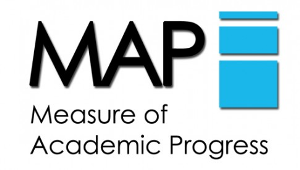Starting next week learners in grades 2-8 will be taking the MAP (Measures of Academic Progress) test. MAP testing is done on a computer and each test adapts to the student’s previous answers, so if they answer a question correctly, the test gets progressively more challenging. If a student answers a question incorrectly, the test adapts to become easier.
MAP is a standardized test and is only one part of ISB’s overall assessment plan. MAP testing is given twice a year, in the fall and in the spring. MAP provides a standardized measure of student growth in Reading and Mathematics based on our content standards. A true picture of a child’s academic progress must include a variety of opportunities to demonstrate learning such as ongoing formative assessments given regularly in class; evidence of understanding such as writing samples, projects, and presentations; and teacher designed assessments. Teachers collect a range of learning data to help them determine where students are in their learning and where they are ready to go next. MAP is a single piece of your child’s learning picture.
MAP measures your child’s achievement level compared to other students who have taken this test. However, the student sample is drawn from US public and private schools, not international schools. The test does not cover all academic skills, nor does it cover such areas as physical, artistic, or interpersonal skills.
As with any standardized assessment, students can become anxious about how they will perform. You can support your child by ensuring that s/he gets a good night’s sleep, has a healthy breakfast, and comes to school knowing that this is important, and they can do it!
If you have any questions, you can look at the NWEA website or contact Debi Caskey, ISB’s Deputy Head of School for Learning (debic@isb.ac.th).

